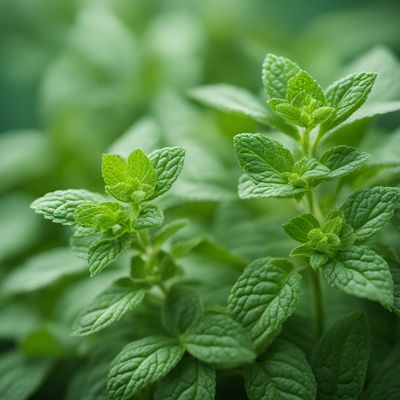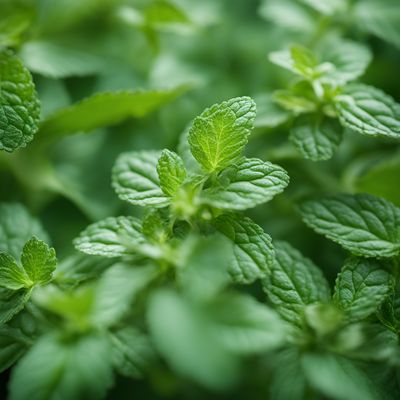
Ingredient
Other species and hybrids of genus Mentha, not elsewhere mentioned
The Aromatic Herb Family
Other species and hybrids of the Mentha genus, including peppermint, spearmint, and chocolate mint, are aromatic herbs known for their refreshing and cooling properties. These herbs have a bright, minty flavor that can range from sweet and cooling to bold and pungent. They are commonly used in teas, desserts, cocktails, and savory dishes.
Origins and history
Mint has a long history and is believed to have originated in the Mediterranean region. It has been used for centuries in various cultures for its medicinal properties and culinary uses. Peppermint, spearmint, and other mint varieties have been cultivated and enjoyed for their distinct flavors and aromas.
Nutritional information
Mint is low in calories and contains small amounts of vitamins and minerals, including vitamin A, vitamin C, and calcium. It is also known for its antioxidant and digestive properties. However, mint should be consumed in moderation as excessive intake may cause adverse effects for some individuals, such as heartburn or allergic reactions.
Allergens
Mint may cause allergic reactions in individuals who are sensitive to the plant. It may also interact with certain medications or exacerbate certain health conditions, so it is advisable to consult a healthcare professional if you have any concerns.
How to select
When selecting mint, look for fresh, vibrant leaves that are free from blemishes or discoloration. The leaves should have a strong, pleasant aroma. Avoid wilted or yellowed leaves, as they indicate poor quality or age.
Storage recommendations
To maintain the freshness of mint, store it in the refrigerator. Place the stems in a glass of water, cover the leaves loosely with a plastic bag, and refrigerate. This will help keep the leaves hydrated and extend their shelf life. Alternatively, you can also freeze mint leaves by placing them in an airtight container or freezer bag.
How to produce
Mint can be easily grown in home gardens or containers. It thrives in well-drained soil and prefers partial shade. Mint plants can be propagated from seeds or cuttings and require regular watering to keep the soil moist. However, mint is a vigorous grower and can quickly spread, so it is recommended to grow it in containers to prevent it from taking over the garden.
Preparation tips
Mint leaves can be used in a variety of ways. They can be added to salads, fruit dishes, or infused in water for a refreshing beverage. Mint is also commonly used in teas, both hot and iced. It pairs well with chocolate, lemon, lime, and other citrus flavors. In savory dishes, mint can be used in marinades, dressings, or as a garnish for Middle Eastern or Mediterranean-inspired dishes.
Culinary uses
Mint is widely used in culinary applications around the world. It is a key ingredient in mint juleps, mojitos, and other cocktails. Mint is also commonly used in Middle Eastern, Indian, and Southeast Asian cuisines, where it is added to curries, chutneys, and salads. In desserts, mint is often paired with chocolate or used to flavor ice creams, sorbets, and pastries.
Availability
Mint is cultivated in many countries, including the United States, India, China, and Morocco. It is also commonly available in grocery stores and supermarkets worldwide.
More ingredients from this category

Spearmint
"The Refreshing Herb: Unveiling the Delights of Spearmint"

Corsican mint
"The Refreshing Delight: Discover the Aromatic Magic of Corsican Mint"

Pennyroyal
The Versatile Herb: Pennyroyal

Gingermint
The Perfect Blend of Zesty Ginger and Refreshing Mint

Apple mint
Refreshing Minty Twist

Water mint
"Refreshing Twist: Exploring the Delights of Water Mint"

Peppermint
The Refreshing Herb: Peppermint

Bergamot mint
The Citrus Twist